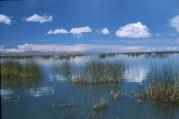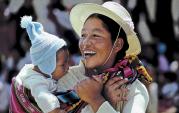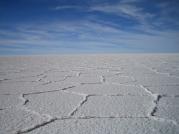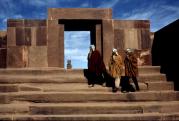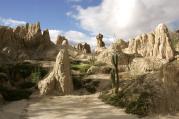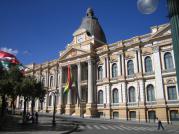Country Information Bolivia
| Location |
| |
Bolivia (approx. 1,1 Million km2 surface) is situated in the heart of South America – it borders on Peru in the North, on Brazil in the East, on Argentina in the South, on Paraguay in the Southeast and in the Southwest on Chile. |
| Population |
| |
Approx. 8 Million, around the half of the population still belongs to Indian groups |
| Currency |
| |
Boliviano (1 Bs = 100 Centavos)
|
| Language |
| |
Lingua franca is Spanish, other official languages are Aymara and Quechua |
| Time difference |
| |
CET - 5 hours ( CET, summertime – 6 hours) |
| Voltage |
| |
220 V alternating current, it is recommendable to bring a multi-adapter because of the often different sockets |
| Public holiday |
| |
1st January, 1st May, 6 August, 1st/2nd November, 25 December – February/March: Carnival; March/April: Good Friday; May/June: Feast of Corpus Christi
|
| Opening hours |
| |
The opening hours are not regulated by law; most of the shops open between 9 and 10:00 am and close around 19/20:00 pm. Siesta is generally held between 13:00 and 15:00 pm |
| Climate |
| |
There is a rich variety of climate within Bolivia – 2/3 of the country has a tropical climate, a rather dry and temperate climate is dominating in the Altiplano and a sub arctic cold in the Andes. Rainfalls decrease from north to south. |
| Best travel time |
| |
The ideal time for travelling in the lowlands are the drier months from January to July (average temperature in Santa Cruz 28°). If you want to visit the region around La Paz or the Lake of Titicaca, it would be best to travel during the there drier months from May to October.
|
| Clothing |
| |
Regarding the different climatic zones it is recommendable to bring summer as well as autumn clothes – moreover you should note that it gets very cold in the highlands in the evening. Sun glasses, sun cream, headgear, rainwear and good footwear are always useful! |
| Politics & Economy |
| |
Bolivia has been the politically most unstable country of Latin America for a long time. It was confronted with 80 presidents and 300 attempted coups over the years. But since the 80ies Bolivia is an economically and politically stable country. It is a presidential republic with a threefold separation of powers.
The country is one of the poorest in Latin America – approximately 40 % of the working population works in the agricultural sector, only producing 16 % of the nation's Gross National Product. The processing industries are quite poorly developed and the mining is with 44 % the most important sector. The illegal cocaine industry still produces ¼ of the GNP. |
| Tourist destinations |
| |
| La Paz |
residence of the government, the "highest big city of the world", Indian markets
|
| Sucre |
Capital, colonial jewel of Bolivia
|
| Potosí |
Indian weekly market in Tarabuco Legendary city of silver, silver mines
|
| Lake Titicaca |
the highest navigable lake in the world "Island of the sun"
|
Salar de Uyuni
|
the biggest salt lake in the world |
|
| Flora & Fauna |
| |
The tropical rainforest in the Amazon region has a gigantic quantity of different plants and animals. There are from 300 to 500 species of trees (e.g. also mahogany and other high-grade woods) growing on one hectare of jungle soil. You will find parrots, colibri, toucans,Caymans in the swamps, tapir, porcupine and jaguar and more than 1500 species of freshwater fish, among others the famous piranha. Guanacos and iguana live in the dry regions in the Andes. |
| Food & Drink |
| |
Bolivia is well-known for its stews and soups, often very spicy and made of potatoes. Pastel de choclo and Humitas, stuffed with thick maize porridge are another local speciality. |
| Souvenirs |
| |
Textiles like alpaca-pullovers or ponchos with typical Indian pattern, leather goods, pottery, gold and silver jewellery, any kind of craft industry as well as cassettes and discs with music from the Andes are always nice souvenirs. Relatively cheap clothes and shoes might be bought in the bigger cities. PLEASE NOTE: It is forbidden to take coca leafs or coca tea out of the country!! |


